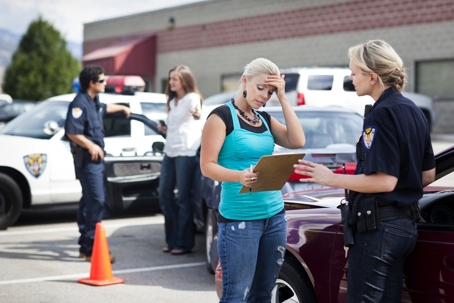Understanding your North Carolina crash report is essential after an auto accident. The North Carolina crash report, formally known as DMV-349, serves as the foundation for insurance claims, personal injury lawsuits, and determining who was at fault. Here's how North Carolina crash victims can make sense of this report and protect their rights.
Why the Crash Report Matters
- Evidence for Your Claim: Insurance companies and courts rely on the crash report to assess liability and damages.
- Spotting Errors: Even minor mistakes can affect your compensation.
- Timely Action: The report is typically filed within 24 hours of the crash and made available within days. See our other blog posts on how to obtain a crash report from your local law enforcement, or the North Carolina DMV.
The DMV-349: Key Sections Decoded
The DMV-349 report contains many boxes, codes, and abbreviations. When reading the report, be sure to reference the DMV’s code sheet to determine the meaning of the numbers in each box.
1. Reporting Information
- Date, Time, and Location: Found near the top of the form, this information confirms details of when and where the crash occurred.
2. Drivers and Vehicles
- Driver Details: Each driver involved will be listed under “Unit 1” or “Unit 2.” This section includes names, addresses, license numbers, and physical conditions of each driver.
- Vehicles: Underneath the driver details is information about the vehicles involved. Make, model, year, VIN, license plate, and insurance information for each vehicle is included.
3. Crash Circumstances
Boxes 1-7 include information about the location of the crash, the weather, and the road conditions for the day of the crash.
- Weather Conditions: On the left side of the first page, Boxes 4 and 5 will include numbers that correspond with the weather conditions on the day of the accident.
4. Contributing Circumstances and Fault
One of the most important parts of the DMV-349 is the contributing circumstances, found in Boxes 14-16 (Driver 1) and 17-19 (Driver 2). These boxes can be found on the right hand side of the crash report.
- Cross-reference these boxes with the DMV’s code sheet for precise meanings.
- Some common examples include:
- 12: Improper Lane Change
- 19: Failed to Yield Right of Way
- 25: Followed Too Closely
5. Narrative and Diagram
On the second page of the DMV-349, you will find the crash narrative, crash diagram, witness information, and citations issued.
- Crash Diagram: Found in Box 84, the diagram is a visual representation of all vehicles, direction of travel, road signs, and the point of impact. Double-check this for accuracy.
- Crash Narrative: Found in Box 85, the narrative is the officer’s brief, written account of how the accident happened. While the officer’s opinion is not the final word for liability, this section can heavily influences insurance decisions.
6. Citations and Witnesses
Box 86 contains information about any citations issued or witnesses to the crash.
- Citations Issued: Look at the bottom of page two to see if anyone was ticketed.
- Witnesses/Passengers: Contact information for non-driver parties. Identifying witnesses can assist in proving your claim, if needed. It is not uncommon for no witnesses to be listed.
Applying the Crash Report to Your Claim
- Disputing Errors: If you review your crash report and find an error, it is important to request a correction from the reporting
- Understanding Contributory Negligence: North Carolina follows a “pure contributory negligence” doctrine—if you’re even 1% at fault, recovery may be barred. It’s crucial to catch and dispute any errors that could suggest you were partially at fault.
If you have questions or need help interpreting your North Carolina crash report, a personal injury attorney can break down the codes, correct errors, and advocate for your full compensation. If you or a loved one has been injured in a car accident, contact us today by submitting a form on our website, or giving us a call at 704-333-1114.

